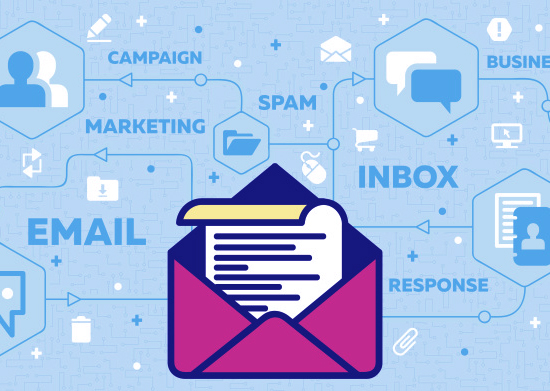
Like most small online businesses, we’ve been emailing customers for a very long time. There is nothing better than funneling automated emails that reengage past and current customers. We are able to do this thanks to a Shopify app called CM Commerce Email Marketing (formerly Conversio). For every email you send, the below components are critical in today’s savvy marketing efforts.

Personalization
In a national poll, consumers expressed frustration when receiving emails they are uninterested in. For email marketing to be more successful, the content must speak directly to the audience. Be sure to use your customers’ names in emails since this forms an instant connection. You can also include a real person’s name as the sender along with the company name. Another easy method for implementing personalization is by adding product recommendations to emails. Here are a few statistics you may find interesting for sending effective emails:
- Personalized emails improve clickthrough rates by 14% and conversion rates by 10%. (Source: Aberdeen)
- HubSpot found that calls-to-action targeted to the user had a 42% higher view-to-submission rate than those that were the same for all visitors. (Source: HubSpot)
- Three-fourths (74%) of consumers get frustrated with websites when content (e.g. offers, ads, promotions) appears that has nothing to do with their interests. (Source: Janrain & Harris Interactive)
Most email marketing platforms available for small businesses offer ways to personalize emails. Consider implementing those options as much as you can. If you would like to see more statistics concerning personalization, read “Stop being Rude” by Meghan Keaney Anderson.
Visuals and Branding
Emails are intensely visual. The design will play a major role in engaging your consumers and leading to sales conversions. Many platforms offer slick templates and easy ways to quickly create a fresh design. Try using the same template for consistency and reliability. Your template should match your brand identity. A polished and professional appearance will help you avoid being labeled as spam.
Be sure to assign images with alt tags since many people block images in their emails. Each image alt tag should supply email recipients with the information they need from your newsletter if your images fail to properly render. Don’t try to hide your unsubscribe button so consumers do not flag your emails as spam.
Schedule and Frequency
Think about an ongoing email strategy that does not overwhelm your clients but does improve sales and conversions. Try combining automated emails with custom newsletters. Conversion recommends sending weekly, biweekly, or monthly sales newsletters.
Try to mix recurring emails with automatic emails. Examples include cart abandonment emails, anniversary emails, non-active emails, and product recommendations emails. Take your time and try to find the right balance. You want to be very careful not to annoy your customers into labeling you as spam.
Call-To-Action
Use a straightforward principle to guide your strategy: make your required action visible, so your reader understands what to do next. Don’t expect your recipient to do the legwork themselves to figure out what action they can take to further the relationship.
Email recipients are easily distracted. If your message is not immediately apparent, you will lose the prospect in an instant. The good news is that you don’t have to overthink a compelling CTA. Stick to one conspicuous prompt and place it in a spot where they can’t miss seeing it.
Call-To-Action examples
- Get started printing
- Try for free
- Learn more
- Join us
- Join free for a month
- Claim your free trial
- Follow the magic
- Buy now and save
- Redeem your coupon
Segmentation
Curating several well-maintained lists of segmented customers should be high on your list of sending effective emails. Research indicates segmented campaigns result in increased open rates and clickthroughs. Platforms like Conversio, Mailchimp, and Shopify help small businesses segment users into categories like high risk, prospects, and inactive.
The results speak for themselves, and the best way to succeed with segmentation is to carefully monitor your lists and use triggers to maintain them over time. This practice eventually leads you to list culling. Most marketers believe that at least 26% of their list subscribers are inactive and best practices denote that you should periodically identify and reengage with them

